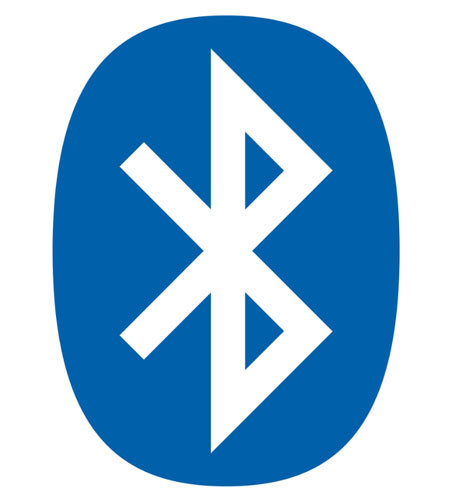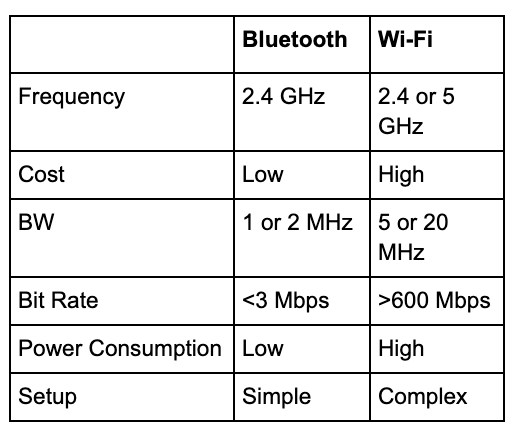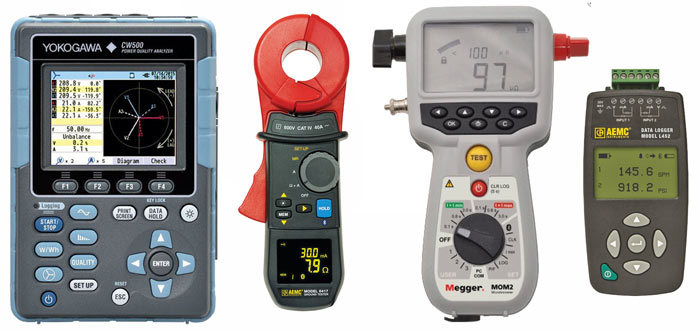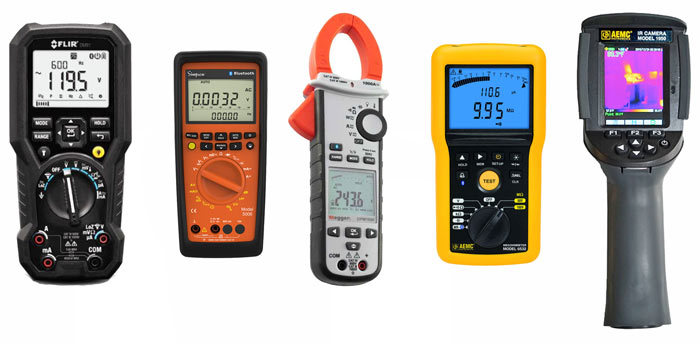Most of us are familiar with Bluetooth as the connection from a cell phone to wireless earbuds or a remote speaker. This low-power communication protocol is simple to set up and use. It operates in the globally unlicensed industrial, scientific and medical (ISM) band from 2.40-2.48 GHz.  The Bluetooth standard is managed by the Bluetooth Special Interest Group (SIG). This group was formed in 1998 by IBM and Ericsson, with Intel, Nokia, and Toshiba as additional members. The first Bluetooth specification was published that same year and the first product, a wireless headset, appeared in 1999. The most recent major revision of the standard (Bluetooth 5.0) was released in 2016. The latest update (5.4) came out in February 2023. The Bluetooth SIG now has over 30,000 member companies. Products that carry the Bluetooth logo have been qualified to assure compliance with the specification and interoperability with other Bluetooth products.
The Bluetooth standard is managed by the Bluetooth Special Interest Group (SIG). This group was formed in 1998 by IBM and Ericsson, with Intel, Nokia, and Toshiba as additional members. The first Bluetooth specification was published that same year and the first product, a wireless headset, appeared in 1999. The most recent major revision of the standard (Bluetooth 5.0) was released in 2016. The latest update (5.4) came out in February 2023. The Bluetooth SIG now has over 30,000 member companies. Products that carry the Bluetooth logo have been qualified to assure compliance with the specification and interoperability with other Bluetooth products.
Bluetooth Functionality
Bluetooth uses a master/slave architecture. One master can communicate with up to seven slave devices using a frequency-hopping spread spectrum technique. Bluetooth divides transmitted data into packets. Each packet is transmitted on one of 79 Bluetooth channels. Each channel has a bandwidth of 1 MHz. A low energy mode (Bluetooth LE) uses 2 MHz spacing, which accommodates 40 channels. Communication between two Bluetooth devices is established through a process called pairing. The master scans for available devices that are in range. The user selects the target and the master initiates the pairing. In some cases, the slave device may initiate the pairing request by temporarily acting as a master (a headset initiating a connection to a phone, for example). In some applications, the master knows the identity of the desired target and no user action is required for pairing to take place. Regardless of the method used to initiate pairing, when it is completed, a bond forms between the two devices. This enables them to connect in the future without repeating the pairing process.
After pairing, data is transferred between the master and one slave device at a time (except for the little-used broadcast mode). If there is more than one slave, the master typically chooses which slave to address by switching rapidly from one device to another in a round-robin fashion. A slave listens and responds when addressed. The Bluetooth protocols simplify the discovery and setup of services between devices. A Bluetooth device can announce all of the services it provides. This makes it easier to use these services since most of the addressing, security, configuration and permissions can be automated.
 Many networks support both Bluetooth and Wi-Fi communication. A Bluetooth network is often called a personal area network (PAN). Wi-Fi is typically used for wireless connections to a router or modem in a local area network (LAN). It uses 5 channels in the 2.4Mz band for faster performance than Bluetooth and can operate in higher frequency bands for even better throughput. Wi-Fi is better suited for operating large networks because it has higher speed, better range, and more robust security. Bluetooth advantages are lower cost, lower power consumption and simpler setup.
Many networks support both Bluetooth and Wi-Fi communication. A Bluetooth network is often called a personal area network (PAN). Wi-Fi is typically used for wireless connections to a router or modem in a local area network (LAN). It uses 5 channels in the 2.4Mz band for faster performance than Bluetooth and can operate in higher frequency bands for even better throughput. Wi-Fi is better suited for operating large networks because it has higher speed, better range, and more robust security. Bluetooth advantages are lower cost, lower power consumption and simpler setup.
In the most widely implemented mode for battery-operated devices (Class 2), Bluetooth transmit power is limited to 2.5 milliwatts. This provides a typical range of 10m (33 ft). Class 1 allows an output power of up to 100mW. At this power level, with a high gain antenna and sensitive receiver, the Bluetooth SIG website quotes a maximum range of 45m for home/office, and 140m for an industrial site.
Bluetooth Products
Today Bluetooth exists in thousands of consumer products such as laptop computers, cell phones, tablets, media players, game consoles, speakers, headsets, hearing aids, and watches. Due to the low transmit power and the large number of other devices that operate in the same ISM band, interference can be a problem. Nevertheless, Bluetooth is useful for low-bandwidth applications when transferring information between two or more devices that are near each other. Bluetooth support is built into Windows, Mac OS X, Fire tablets, iPhones, Android phones and most other personal communication products.
Bluetooth capability is now appearing in instrumentation for industrial applications. It is optimal for portable instruments that generate a limited amount of data. A search of the Weschler website shows a variety of products with Bluetooth capability.
This grouping shows (left to right):
 Flir DM91 Datalogging Multimeter
Flir DM91 Datalogging Multimeter- Simpson 5006T DMM
- Megger DPM1000 Power Clamp Meter
- AEMC 6534 Megohmmeter
- AEMC 1950 Infrared Camera
Setup parameters, readings, data graphs and images can be transmitted via Bluetooth. Many manufacturers provide software to simplify data retrieval from Bluetooth-compatible instruments. For example, Flir data management software will extract stored readings from the DM91 for troubleshooting and archiving. This meter will also send readings via Bluetooth to compatible infrared cameras so that information can be inserted into live or saved thermal images. For the Megger DPM1000, the Megger Link app is available from the Google Play store. It allows the user to remotely view a linked instrument’s displayed values in a digital and graphical format, start a data logging process or download saved files. Screenshots and data files can then be sent via e-mail or messenger for analysis and reporting purposes. Bluetooth communication for the AEMC 6534 is handled by Windows-based Dataview software that is supplied with the meter.
 The second product grouping shows (left to right):
The second product grouping shows (left to right):
- Yokogawa CW500 Power Quality Analyzer
- AEMC 6417 Ground Tester
- Megger MOM2 Micro-ohmmeter
- AEMC L452 Two-Channel Process Datalogger
For the CW500, the free CW500Viewer software handles data transfer via USB, Bluetooth or SD card. This Windows-based package simplifies analyzing data, preparing reports, saving setting files and making real-time measurements. The L452 connects to a PC using either Bluetooth or USB. Once connected, logged data can be downloaded, analyzed, and formatted into reports using the Data Logger Control Panel in the same Dataview software provided with their 6534. This Control Panel also enables users to change settings on the instrument, view real-time measurements, schedule recording sessions, lock the front panel, and perform other configuration tasks.
The same features that make Bluetooth popular in consumer products are useful in industrial applications. Instrumentation with Bluetooth communication can simplify measurement tasks and complement other methods for the transfer and storage of data. An increasing number of Bluetooth-capable instruments can be expected in the near future.

 Flir DM91 Datalogging Multimeter
Flir DM91 Datalogging Multimeter